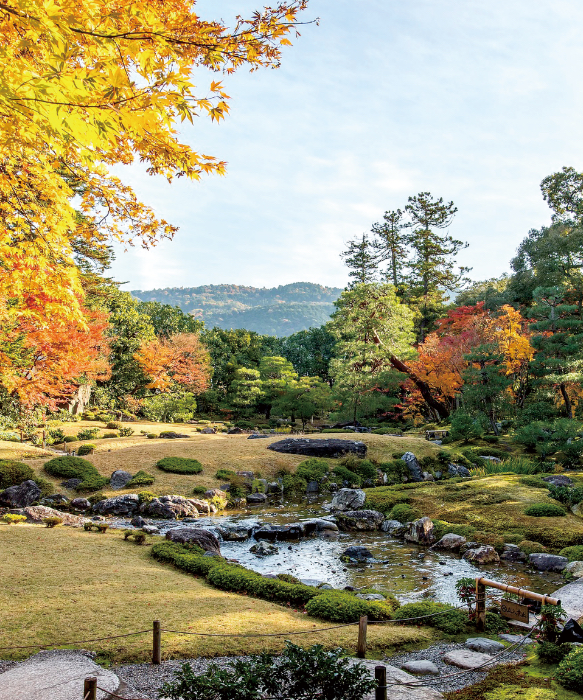
Murin-an (Modern Japanese garden )
Garden Culture
The gardens of aristocratic residences and temples embody the hearts and souls of the landscape gardeners who created them.
Delight in thinking about why a stone lantern has been placed here, or why a rock there?

Looking upon a garden in Kyoto, conjures up a physical sense of the earth, wind and aromas of Kyoto both today and a thousand years ago.
Landscaped next to the Myojingawa Stream, the Garden of Nishimura Villa is the legacy of a Kamigamo chief Shinto priest, who designed it in 1181, with a sacred rock symbolizing the deity mountain and a place for priests to perform cold-water ablutions before serving at the shrines. Thus, making the most of the clear flow of Myojingawa Stream and the seasonal blooms, this garden underpins beliefs embodied in nature.
The whole of the Matsuo-Yamada area was the manor of Count Hamuro in the Heian period. The Yamaguchi family of Nishiyama served Count Hamuro in the Heian period and have lived on this land for more than 400 years. The name of the house and garden is “Taikokyo”, meaning “the house with the aroma of moss”, an appellation supplied by a tea master And, even today, the house and garden are used for many tea ceremonies, enabling visitors to enjoy the lush hues of various mosses contrasted against the beauty of cherry blossoms, rhododendrons and maples.
With the emergence of Zen Buddhism, came the stone and sand arrangements of karesansui, or Japanese rock gardens. The dry landscape garden at Ryoan-ji Temple is laid with white gravel across a width of 25 meters and a depth of 10 meters and has just 15 small-to-large stones positioned within its rectangular shape – yet, this micro wonder conjures up varied landscapes and visions in the mind’s eye of viewers, rousing philosophical discoveries that talk to the self.
The garden at Murin-an, the villa of Aritomo Yamagata, one of Japan's elder statesmen during the Meiji and Taisho periods, is a designated national place of scenic beauty created according to Yamagata's instructions by landscaperJihei Ogawa VII between 1894-96. By incorporating the view of the Higashiyama mountains and water from Lake Biwa Canal, the garden radiates a vivid and bright atmosphere redolent of the modern era ushered in by the Meiji period (1868-1912). Lake Biwa Canal, completed in1890, was indispensable in making Murin-an, with its sparkling stream and lush lawn, the most pioneering garden of its time.
Around the same time, Jihei Ogawa VII also landscaped the garden at the Namikawa Cloisonné Museum of Kyoto. In fact, this is said to be the first garden where Ogawa incorporated water from Lake Biwa Canal. Offset by the strong impression of lively flowing water, the garden casually incorporates rocks and old roof tiles and is decorated with objects, such as stone lanterns and a stone wash basin.